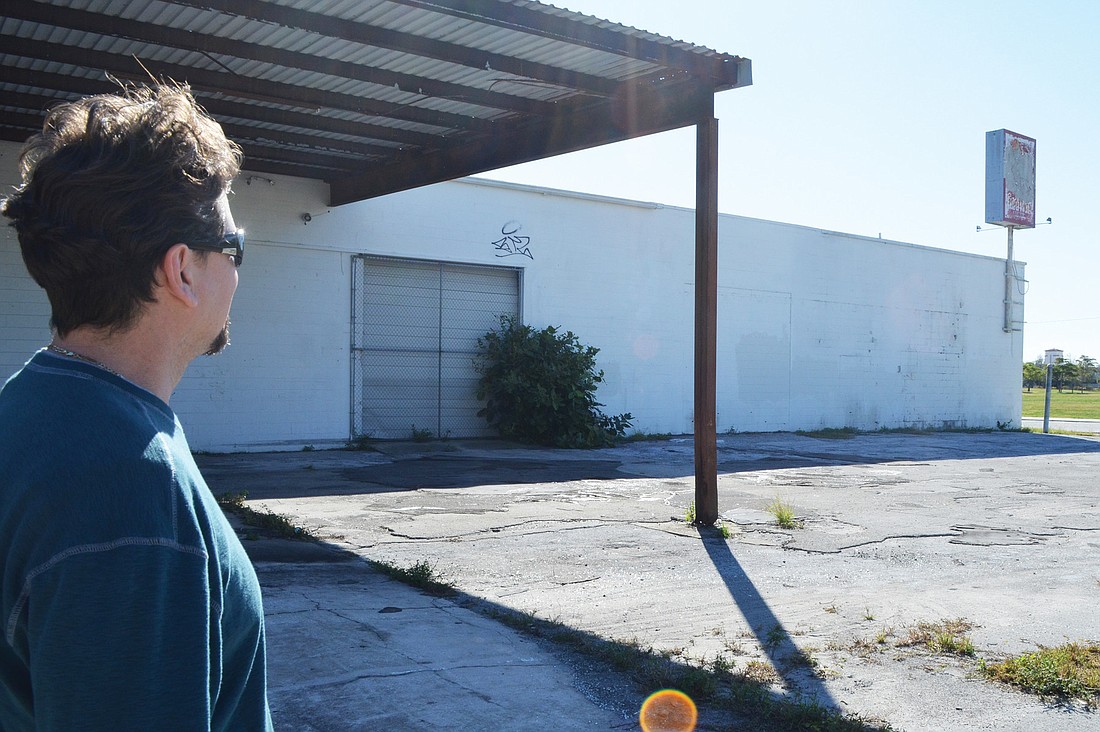- April 19, 2024
-
-
Loading

Loading

Two downtown business owners hope a development overlay area and an expanded tax district would bolster redevelopment on the perimeter of downtown.
Forrest Shaw, owner of Pastry Art café, and John Anderson, owner of Mozaic, presented their proposal for the overlay and expanded tax district to the Downtown Improvement District (DID) board Tuesday morning.
Shaw, an advocate for a streetcar project, said the overlay area, combined with a fixed-rail streetcar downtown, would spur redevelopment and eventually bring millions in tax revenue to the city.
The proposal for all three concepts — the expansion of the DID, overlay area and the streetcar project — is preliminary. It would take a lengthy public process before such changes could happen.
“This is planting a seed for a tree to grow,” Shaw said before the meeting Tuesday, Jan. 22. “We are at the beginning of this entire process.”
Under Shaw’s proposal, the overlay area would allow changes in land use and density designed to encourage development. The proposed expansion of the Downtown Improvement District would bring in tax revenue that would pay for area capital improvements, possibly including part of the cost of the streetcar project.
“Today, we are not proposing doing it,” Shaw said after the meeting. “Today we are proposing studying it.”
Phase one of a streetcar project is estimated to cost between $15 million to $75 million and depends on the kind of streetcar and track system chosen.
The proposed district and overlay area would run 500 feet beyond the boundaries of the street car track (see map).
The expanded DID would nearly triple the current district’s boundaries.
“We have an opportunity to provide more mixed use and smaller residential housing,” Shaw said.
Shaw also showed a new 2.3-mile hybrid streetcar route that combined two previous proposed routes.
After the DID meeting, Shaw said he would take his proposal to the City Commission soon. DID board members were open to further studies based on Shaw’s presentation.
Property owners in the expanded district would have to approve the expanded tax district.
Property owners in the current DID pay an extra two mills in property tax for the purpose of maintenance, capital improvements and other district improvements.
The topic of density increases is a “complicated” subject, and if the proposal for the overlay area generates interest, the city would need to hire a consultant to look into different options, said City Planner Steve Stancel.
DID member Tom Mannausa spoke at the meeting in favor of the proposal.
Ritz said he would contact individual city commissioners to let them know of the DID board’s plan to hold a workshop on the overlay area. Board members talked about modeling the overlay after a previous overlay called the Downtown Residential Overlay District (DROD). That overlay allowed certain developers to built four times more residential units than typically allowed.
During its strategic planning process, the City Commission already highlighted density changes on certain downtown parcels as a projected goal. And DID board members said they did not want to usurp that process.
 The DROD allowed developers to build up to 200 units per acre — four times what was typically allowed. The overlay aimed to address commissioners’ longstanding desire to entice developers to build more affordable housing downtown. Before that overlay expired in June 2007, developers of 1350 Main St. tower received approval for the higher density.
The DROD allowed developers to build up to 200 units per acre — four times what was typically allowed. The overlay aimed to address commissioners’ longstanding desire to entice developers to build more affordable housing downtown. Before that overlay expired in June 2007, developers of 1350 Main St. tower received approval for the higher density.
Ritz said bringing back an overlay downtown would make it possible for developers to build some smaller, more affordable units that working professionals could afford.
“They have to have an overlay district to make workforce housing possible,” Ritz said after Tuesday’s meeting.
Ritz also said the streetcar project becomes more viable if the overlay is approved.
“The streetcar depends on people living near it,” Ritz said.